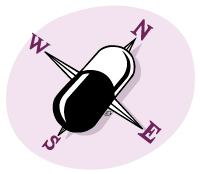 Prescrire's eighth consecutive annual review of drugs to avoid includes documented cases of drugs that are more dangerous than beneficial. The aim is to make it easier to choose safe, effective treatments, primarily to avoid exposing patients to unacceptable harms. The drugs listed (sometimes a particular form or dose strength) should be avoided in all the clinical situations for which they are authorised in France or in the European Union.
Prescrire's eighth consecutive annual review of drugs to avoid includes documented cases of drugs that are more dangerous than beneficial. The aim is to make it easier to choose safe, effective treatments, primarily to avoid exposing patients to unacceptable harms. The drugs listed (sometimes a particular form or dose strength) should be avoided in all the clinical situations for which they are authorised in France or in the European Union.
> FREE PDF "Towards better patient care: drugs to avoid in 2020" Prescrire Int 2020; 29 (212): 51-1 - 51-10.
Main changes in the 2020 update
Prescrire updates its review of drugs to avoid every year. As a result,some drugs are added to the list, while others are removed pending the outcome of our reassessment of their harm-benefit balance. In other cases, the pharmaceutical company or a health authority decided to withdraw the drugs from the market, or new data show that their harm-benefit balance is no longer clearly unfavourable in all their indications. Here we outline the main differences between the 2019 and 2020 lists of drugs to avoid. See: > A reliable, rigorous and independent methodology
Market withdrawals in France
One drug included in Prescrire's 2019 list of drugs to avoid is no longer marketed in France: mephenesin, a muscle relaxant. The French Health Products Agency withdrew marketing authorisation for products containing this drug in mid- 2019, due to its unfavourable harm-benefit balance. We left it on our list of drugs to avoid, however, since it is still marketed for topical application in Belgium, for example.
Gliflozins: harm-benefit balance unfavourable in type 2 diabetes, but under review in type 1 diabetes
As of 2019, glucose-lowering drugs belonging to the gliflozin class (sodium-glucose co-transporter 2 inhibitors) have an unfavourable harm-benefit balance in type 2 diabetes (Prescrire Int n° 211). Those currently marketed in Europe are canagliflozin (alone or combined with metformin), dapagliflozin (alone or combined with metformin or saxagliptin), empagliflozin (alone or combined with metformin or linagliptin), and ertugliflozin (Rev Prescrire n° 434). However, we did not include the gliflozins in our 2020 list of drugs to avoid, because dapagliflozin has been authorised for use in type 1 diabetes, and our analysis of its harm-benefit balance in this situation is in progress.
Selexipag removed from the list in light of new data
The oral prostacyclin receptor agonist selexipag, authorised for pulmonary arterial hypertension, has been dropped from this year's list. It was added to our list of drugs to avoid in 2018, because excess mortality had been observed in the main clinical trial on which its marketing authorisation was based. It was removed in 2019 while Prescrire reassessed its harm-benefit balance. Following our review of the latest data, selexipag has not been put back on our 2020 list, even though its harm-benefit balance is highly uncertain, and the risk that it hastens the death of certain patients during the first months of treatment has not been ruled out (Rev Prescrire n° 433).
Additions to this year's list of drugs to avoid: alpha-amylase, diosmectite and other medicinal clays, Ginkgo biloba, etc.
Twelve drugs were added to our 2020 list of drugs to avoid because their adverse effects are disproportionate to their efficacy or the severity of the clinical situation for which they are authorised. They are:
- alpha-amylase, authorised for sore throat;
- Ginkgo biloba for cognitive impairment in elderly patients;
- naftidrofuryl for intermittent claudication associated with peripheral arterial disease; oral pentosan polysulfate for bladder pain syndrome;
- pentoxyverine for cough;
- the nonsteroidal anti-inflammatory drug tenoxicam;
- xylometazoline, a nasopharyngeal decongestant available in several European countries;
- the medicinal clays attapulgite (marketed alone and in multi-ingredient preparations), diosmectite, hydrotalcite, montmorillonite beidellitique alias monmectite (marketed alone and in multi-ingredient preparations), and kaolin (a component of multi-ingredient preparations) are authorised to treat various intestinal disorders, including diarrhoea, but should be avoided due to lead contamination.
> FREE PDF "Towards better patient care: drugs to avoid in 2020" Prescrire Int 2020; 29 (212): 51-1 - 51-10.
©Prescrire 1 February 2020
|
Share |
 |
 |
